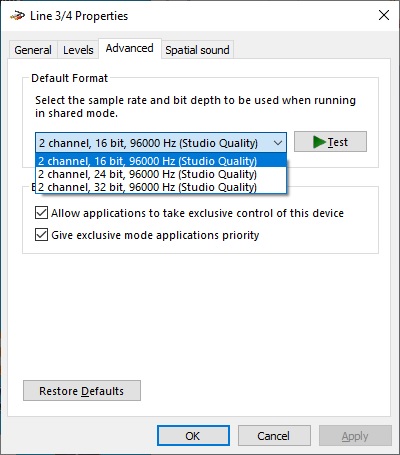imrazor
Head-Fier
- Joined
- Sep 20, 2013
- Posts
- 58
- Likes
- 13
I'm intimately familiar with 16-bit audio since I first bought a Pro Audio Spectrum 16 knock-off way back when. And I've heard of 24-bit audio, which some dismiss as marketing hype. But I recently dusted off an ancient sound card, downloaded some Vista-era audio drivers, and voila I was in business.
I started looking at the audio options in the Windows Control Panel (Settings now) and noticed this:

Never seen that before. Since most of the audio I listen to is standard CD rips (16-bit, 44.1KHz, 320Kbps) I doubt I'll extract any extra listening pleasure from 32-bit audio. But I am curious about it, and whether anyone can tell the difference from 16-bit, 24-bit and 32-bit.
I started looking at the audio options in the Windows Control Panel (Settings now) and noticed this:

Never seen that before. Since most of the audio I listen to is standard CD rips (16-bit, 44.1KHz, 320Kbps) I doubt I'll extract any extra listening pleasure from 32-bit audio. But I am curious about it, and whether anyone can tell the difference from 16-bit, 24-bit and 32-bit.
Last edited:






